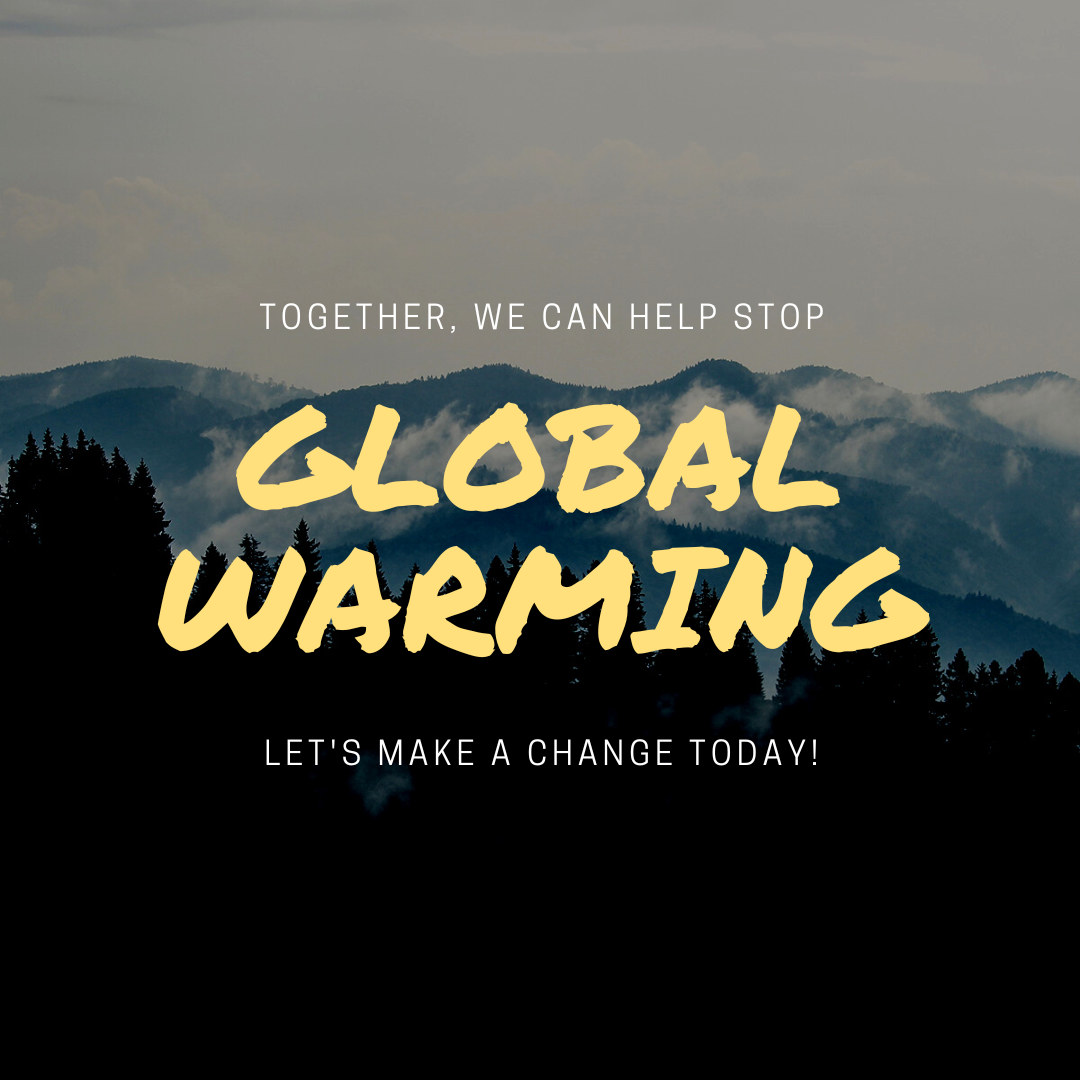
Is Global Warming a Threat? Rising Temperature
Keywords: Global Warming, temperature, carbon dioxide, renewable, sustainable, earth, India
Global warming is the long-term warming of the planet’s overall temperature. Though warming trend has been going on for a long time, its pace has significantly increased in last hundred years.
According to the Intergovernmental Panel on Climate Change (IPCC), global temperature is likely to rise by about 1-3.5 Celsius by the year 2100. It has also been suggested that climate might warm by as much as 10 degrees Fahrenheit over the next 100 years. It has become a major threat to mankind.
INTRODUCTION
Global warming is a gradual increase in the overall temperature of the earth’s atmosphere generally attributed to the greenhouse effect caused by increased levels of carbon dioxide, CFCs, and other pollutants.
It is the long-term heating of the Earth’s surface observed since the pre-industrial period (between 1850 and 1900) due to human activities.
WHY IS IT A THREAT?
- Polluted air and steadily rising temperatures are linked to health effects ranging from increased heart attacks and strokes to the spread of infectious diseases and psychological trauma.
- It is the cause of decreased harvests, increased floods, droughts, extreme weather events, desertification, and the displacement of hundreds of millions of people.
- It will lead to the collapse of multiple population centres around the world.
- It affects oceans and life in the oceans.
- Because of global warming, crops do not grow, animals do not live and as a result, our food supply lessens and causes human extinction.
- The rising sea levels caused by global warming will undoubtedly cause an ecological disaster.
CAUSES OF GLOBAL WARMING
- DEFORESTATION: Forests are being depleted for many domestic and commercial purposes. This has led to an environmental imbalance, thereby giving rise to global warming.
- VOLCANOES: The ash and smoke emitted during volcanic eruptions go out into the atmosphere and affect the climate.
- USE OF VEHICLES: Vehicles burn fossil fuels which emit a large amount of carbon dioxide and other toxins into the atmosphere resulting in a temperature increase.
- MELTING PERMAFROST: Permafrost is frozen soil that has environmental gases trapped in it for several years and is present below Earth’s surface. It is present in glaciers. As the permafrost melts, it releases the gases back into the atmosphere, increasing Earth’s temperature.
- FOREST BLAZES: Forest blazes or forest fires emit a large amount of carbon-containing smoke. These gases are released into the atmosphere and increase the earth’s temperature resulting in global warming.
- CHLOROFLUOROCARBON: With the excessive use of air conditioners and refrigerators, humans have been adding CFCs into the environment which affects the atmospheric ozone layer. The ozone layer protects the earth’s surface from the harmful ultraviolet rays emitted by the sun. The CFCs have led to ozone layer depletion making way for the ultraviolet rays, thereby increasing the earth’s temperature.
- INDUSTRIAL DEVELOPMENT: With the advent of industrialization, the temperature of the earth has been increasing rapidly. The harmful emissions from the factories add to the increasing temperature of the earth.
- OVERPOPULATION: An increase in population means more people are breathing. This leads to an increase in the level of carbon dioxide, the primary gas causing global warming.
GLOBAL WARMING EFFECTS ON
- Biodiversity: The increase in temperatures and the climate upheavals disturb the ecosystems, and modify the conditions and cycles of plant reproduction. The scarcity of resources and climate change are changing the life habits and migratory cycles of animals.
- Oceans: Because of global warming, permafrost and ice are melting massively at the poles, increasing the sea level at a rate never known before. A large amount of CO2 captured by the oceans makes them more acidic, arousing serious questions about the adaptability of seashells or coral reefs.
- Humans: It creates a scarcity of resources like food and energy. Rising sea levels and floods are causing population migration.
- Weather: More droughts and heatwaves, more precipitation, more natural disasters like floods, hurricanes, storms and wildfires, frost-free season, etc.
PREVENTION OF GLOBAL WARMING
- Renewable Energies: It can be prevented by replacing the use of fossil fuels with renewable energies such as solar, wind, biomass and geothermal.
- Energy and Water Efficiency: Reducing the consumption of energy and water by using more efficient devices. Example: LED light bulbs, innovative shower systems) are less costly and are an effective way to prevent global warming.
- Sustainable Transportation: Promoting public transportation, carpooling, and also electric and hydrogen mobility. It can help in reducing CO2 emissions and thus will fight global warming.
- Sustainable Infrastructure: Encouraging better use of natural resources, stopping massive deforestation as well as making agriculture greener and more efficient.
- Responsible Consumption and Recycling: Adopting responsible consumption habits is crucial. Be it regarding food (particularly meat), clothing, cosmetics or cleaning products.
CONCLUSION
The Earth is warming up at a steady pace. It is essential to develop a portfolio or mix of strategies that includes:
- mitigation,
- adaptation,
- technological development (to enhance both adaptation and mitigation) and
- research (on climate science, impacts, adaptation and mitigation).
The fight against climate change is a real opportunity to transition to a low-carbon society, creating jobs, innovation and social justice locally and internationally.
Author: Tanishka Ranjan
Mail us at edumoundofficial@gmail.com






